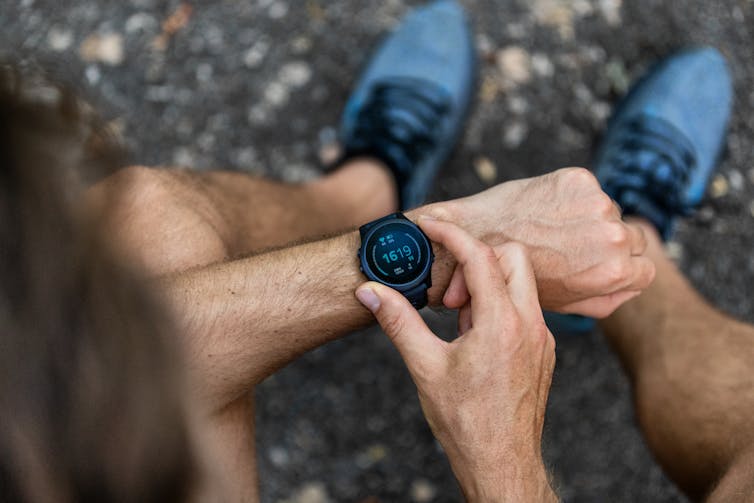Personalised nutrition is trendy, but can it help us eat less junk food?
- Written by Katherine Livingstone, NHMRC Emerging Leadership Fellow and Senior Research Fellow, Institute for Physical Activity and Nutrition (IPAN), Deakin University
Australian adults get around one-third of their energy intake from junk foods.
Also known as discretionary foods, these include foods such as biscuits, cakes, sausages, sugar-sweetened drinks and alcohol.
Unhealthy diets are a key reason why almost one in every three adults in Australia is obese. Excess weight also increases risk of heart disease, type 2 diabetes and some cancers.
Our new research, published today in the International Journal of Behavioral Nutrition and Physical Activity, has found personalised nutrition advice, compared to usual dietary advice, helped adults to eat less junk food.
What is personalised nutrition?
Personalised nutrition involves tailoring dietary advice to improve health, based on the characteristics of the individual. So dietary advice could be tailored based on anything from the person’s eating habits and weight to their cholesterol levels and genetics.
The concept of tailored dietary advice isn’t new — dietitians have been giving personalised advice for centuries. What is new is the rise in popularity of new technologies, apps and wearable devices, which allow for detailed monitoring of individual health. Health-care professionals can then use this information to provide personalised advice.
 New technologies have fuelled the rise of personalised nutrition.
Shutterstock
New technologies have fuelled the rise of personalised nutrition.
Shutterstock
To understand whether personalised nutrition advice improves dietary habits, we conducted the Food4Me Study.
Our research
We recruited 1,607 adult volunteers from across seven European countries into a six-month dietary study.
At the beginning, adults were allocated into either a control group, or one of three personalised nutrition groups.
Usual dietary advice
In the control group adults received usual dietary advice. For example, “eat at least five serves of fruit and vegetables each day”. (In Australia the recommendation is at least seven serves daily.)
Read more: Supermarkets claim to have our health at heart. But their marketing tactics push junk foods
Personalised dietary advice
To help us understand the best way to personalise dietary advice, the three personalised nutrition groups received tailored dietary advice based on different sets of characteristics. All advice was based on behaviour change strategies, such as swapping discretionary foods for healthier alternatives.
Group 1 received advice based on what they ate.
For example, for someone eating a lot of salty meat products, we told them to reduce their intake of processed meats and pies, and swap salami and bacon for turkey or beef.
Group 2 received advice based on their diet and body measurements.
For example, if someone had high waist circumference and cholesterol levels, and was snacking on biscuits and chocolate, we told them they were carrying too much weight around their middle and had high cholesterol levels so would benefit from snacking on fruit and healthy fats, such as nuts, instead.
Group 3 received advice based on their diet, body measurements and genetic information.
For example, if someone had a genetic risk of high cholesterol, and was eating lots of salty meat products, we told them they have a genetic variation and would benefit from maintaining a healthy intake of saturated fat and normal cholesterol levels. We suggested they swap processed meats, for example burgers and sausages, for lean meats or skinless chicken breast.
Read more: These 4 diets are trending. We looked at the science (or lack of it) behind each one
So, does personalised nutrition work?
At the beginning and end of the study we asked our volunteers to complete an online questionnaire, which asked them how often they consumed various foods and drinks.
We found participants who received personalised dietary advice reduced their intake of discretionary foods more than participants who received usual dietary advice.
Interestingly, this improvement in diet was seen across all personalised nutrition groups; regardless of whether advice was personalised based on diet, body measurements or genetics, or a combination of these factors.
That said, we did see some evidence that the addition of genetic information (group 3) helped adults to reduce their discretionary food intake more than those who received advice based on their diet and body measurements alone (group 2).
 We found personalised nutrition advice was associated with healthier eating.
Shutterstock
We found personalised nutrition advice was associated with healthier eating.
Shutterstock
Our findings are consistent with the broader evidence on personalised nutrition.
In a recent systematic review we looked at results from 11 personalised nutrition studies conducted across Europe and North America. We found overall, personalised nutrition advice improved dietary habits more than usual dietary advice.
What do these results mean?
Our results show personalised dietary advice can support people to eat less junk food. This should have important implications for how researchers and health-care professionals design healthy eating strategies moving forward.
It’s important to note our sample was made up of volunteers. So they may be more health-conscious and motivated to improve their dietary habits than the general population.
We need research in more diverse population groups, including young males and people experiencing socioeconomic disadvantage. This will be important for understanding whether personalised nutrition advice can benefit everyone.
Read more: How obesity causes cancer, and may make screening and treatment harder
Some things to consider
Lots of commercial offerings for personalised dietary advice are emerging, such as companies that offer genetic testing and provide dietary advice accordingly, but many are not supported by scientific evidence. Health-care professionals, such as dietitians, should remain the first point of call when seeking dietary advice.
Personalised nutrition advice has the potential to improve the diet and health of Australians. But the reasons for unhealthy diets are complex, and include wider social and environmental influences.
So exploring new ways to support people to eat healthier diets is just one potential way to address the burden of unhealthy eating and related ill-health in Australia.
Authors: Katherine Livingstone, NHMRC Emerging Leadership Fellow and Senior Research Fellow, Institute for Physical Activity and Nutrition (IPAN), Deakin University



















